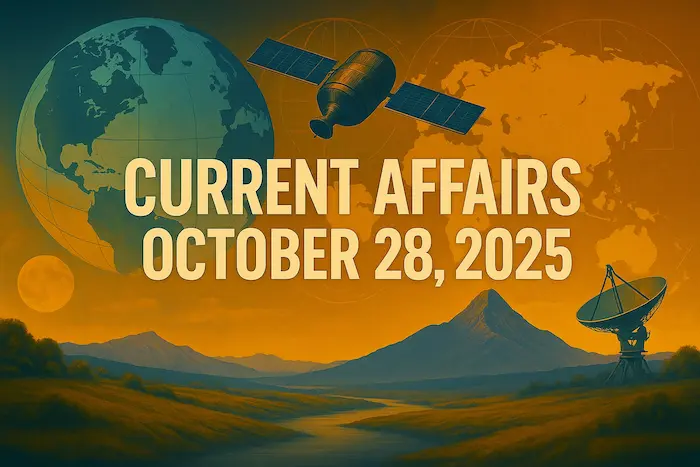1. Subansiri Lower Hydroelectric Project (SLHEP) – Environment

Why in News?
The National Hydroelectric Power Corporation (NHPC) has begun wet commissioning of the first 250 MW unit of the Subansiri Lower Hydroelectric Project (SLHEP). Once completed, it will become India’s largest hydroelectric installation with a capacity of 2,000 MW.
Key Takeaways
Type: Run-of-the-River Hydropower Project
Location: On the Subansiri River, spanning Lower Subansiri district (Arunachal Pradesh) and Lakhimpur district (Assam)
Developer: NHPC Limited
Total Capacity: 2,000 MW (8 units of 250 MW each)
Annual Generation: ~7,500 million units (MUs)
Commissioning Start: October 2025
Construction Began: 2005; delayed due to protests; resumed in 2019 post-NGT clearance
Project Features
| Component | Details |
|---|---|
| Dam Type | Concrete Gravity Dam |
| Dam Height | 116 m (from riverbed); 130 m (from foundation) |
| Length of Dam | 284 m |
| Reservoir Length | 34.5 km |
| Diversion Tunnels | 5 |
| Spillways | 8 |
| Powerhouse Location | Right bank (surface powerhouse) |
Environmental & Social Significance
Located in the Eastern Himalayan Seismic Belt: Dam designed to withstand high seismic activity.
Supports flood moderation, drinking water, irrigation, and clean energy supply to Assam and NE states.
Has faced strong environmental protests from local communities and ecologists, fearing:
Riverine ecology loss
Displacement of people
Impact on endemic fish species and floodplains
Subansiri River – A Quick Glance
| Feature | Details |
|---|---|
| Origin | Tibetan Himalayas |
| Joins | Brahmaputra at Lakhimpur, Assam |
| Known as | “Gold River” (due to alluvial gold traces) |
| Catchment Area | 32,640 sq. km |
| Flow Contribution | ~7.9% of Brahmaputra’s total flow |
| Ecology | Rich in riparian forests, endemic fish species, floodplain farming |
Importance in Energy Transition
SLHEP supports India’s renewable energy mix with base-load green power.
Hydropower plays a crucial role in meeting peak demand and grid stability.
Relevant to current discussions on Pumped-Storage Hydropower (PSH), which:
Stores energy for long-duration use
Enhances reliability compared to solar/wind
Preferred over alternatives like rainwater harvesting or irrigation for energy storage
Exam Connect – Possible Questions
Prelims
1. The Subansiri River is a major tributary of which river system?
A. Ganga
B. Yamuna
C. Brahmaputra
D. Barak
Answer: C. Brahmaputra
2. Which of the following statements about the Subansiri Lower Hydroelectric Project is correct?
1.It is India’s largest hydropower project by installed capacity.
2.It is a pumped-storage project.
3.It lies entirely within Arunachal Pradesh
A. 1 only
B. 1 and 2 only
C. 1 and 3 only
D. All of the above
Answer: A. 1 only
Mains
1. Discuss the environmental and strategic significance of the Subansiri Lower Hydroelectric Project. What lessons does it offer for hydropower development in ecologically sensitive regions like Himachal Pradesh?
2. With reference to India’s energy security goals, evaluate the role of large-scale hydropower projects in balancing renewable energy integration with ecological sustainability.
2. Western Ghats Under Threat: IUCN Flags “Significant Concern” – Environment
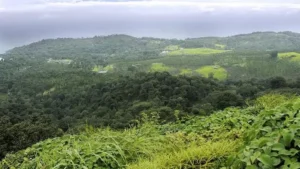
Why in News?
The International Union for Conservation of Nature (IUCN), in its World Heritage Outlook 4 (2023-24) report, has listed India’s Western Ghats, along with Manas National Park (Assam) and Sundarbans National Park (West Bengal) as World Heritage Sites of “Significant Concern”.
Key Takeaways
The Western Ghats, one of the world’s 8 “hottest hotspots” of biodiversity, are now under threat due to unsustainable human activities.
The IUCN has flagged climate change, tourism pressure, road development, and invasive species as key reasons behind the ecological stress.
India’s natural heritage sites are showing signs of degradation, calling for urgent policy and community-based interventions.
About IUCN World Heritage Outlook
| Feature | Description |
|---|---|
| Publisher | IUCN (International Union for Conservation of Nature) |
| Frequency | Every 3–5 years |
| Purpose | Assesses the conservation status of all natural and mixed World Heritage Sites |
| 2023-24 Finding | Only 57% of assessed sites globally have a positive conservation outlook, a drop from 2020 |
Western Ghats – Biodiversity Hotspot
| Criteria | Description |
|---|---|
| Location | Stretching from Gujarat to Kerala, across 6 states |
| UNESCO World Heritage | 39 sites across Kerala, Tamil Nadu, Karnataka, Maharashtra, and Goa (Declared in 2012) |
| Biodiversity | Over 7,400 species, including 325 threatened species like Lion-tailed macaque, Nilgiri tahr, and Malabar civet |
| Ecological Role | Vital for monsoon regulation, river source, and carbon sinks |
Major Threats Identified by IUCN
| Threat | Impact |
|---|---|
| Climate Change | Alters rainfall patterns, increases forest fires, species migration |
| Road & Infrastructure Development | Habitat fragmentation, edge effects, and wildlife fatalities |
| Tourism Pressure | Overcrowding, pollution, land conversion for infrastructure |
| Invasive Species | Displacement of native flora and fauna |
| Hydropower Projects | River ecosystem damage and forest submergence |
Other Indian Sites of “Significant Concern”
Manas National Park (Assam): Recovery challenged by encroachment and poaching
Sundarbans National Park (West Bengal): Sea level rise and industrial pressure threaten mangroves
Way Forward
Implement Kasturirangan Committee Recommendations on Western Ghats conservation.
Encourage community-based ecotourism and promote eco-sensitive zones (ESZ).
Use Geospatial Monitoring and AI tools to track illegal land use and deforestation.
Promote nature-based solutions (NbS) for climate adaptation and watershed management.
Strengthen inter-state coordination as the Western Ghats span multiple states.
Exam Connect – Possible Questions
Prelims
1. Which of the following Indian sites has NOT been listed as a World Heritage Site of “Significant Concern” in IUCN’s World Heritage Outlook 4 report?
A. Sundarbans National Park
B. Manas National Park
C. Valley of Flowers National Park
D. Western Ghats
Answer: C. Valley of Flowers National Park
2. Consider the following threats to biodiversity in the Western Ghats:
1.Hydropower Projects
2.Invasive Alien Species
3.Tourism
4.River Linking Projects
Which of the above have been flagged by IUCN in its recent report?
A. 1 and 2 only
B. 1, 2, and 3 only
C. 2, 3, and 4 only
D. All of the above
Answer: B. 1, 2, and 3 only
Mains
1. The IUCN’s categorization of the Western Ghats as a site of “Significant Concern” reflects a larger crisis in environmental governance. Discuss the ecological importance of the Western Ghats and suggest measures to conserve this critical biodiversity hotspot.
2. With reference to the World Heritage Outlook 4 report, critically evaluate India’s approach to balancing development and conservation in ecologically sensitive zones.
3.Rashtriya Vigyan Puraskar (RVP) – Science & Technology
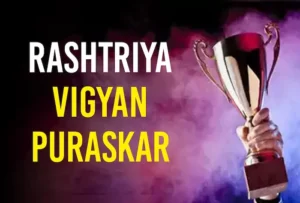
Why in News?
The Government of India has announced the first edition of the Rashtriya Vigyan Puraskar (RVP), positioning it as a prestigious national science award similar in stature to the Padma awards. The RVP aims to recognize excellence in science, technology, and innovation by Indian scientists and researchers worldwide.
Key Takeaways
| Award Category | Notable Winners |
|---|---|
| Vigyan Ratna (Posthumous) | Jayant Vishnu Narlikar, legendary astrophysicist, for the Hoyle–Narlikar theory |
| Vigyan Shri | 8 scientists including Gyanendra Pratap Singh (agriculture) and Yusuf M. Shaikh (pharmaceuticals) |
| Vigyan Yuva – SSB | 14 young scientists awarded for work in physics, biology, data science, etc. |
| Vigyan Team | CSIR Aroma Mission Team awarded for contributions to India’s fragrance and flavor industries |
About the RVP Scheme
| Feature | Description |
|---|---|
| Established | January 2024 |
| Administered by | Rashtriya Vigyan Puraskar Committee (RVPC), chaired by the Principal Scientific Adviser (PSA) to the Government of India |
| Replaces | Older legacy awards like the Shanti Swarup Bhatnagar Prize |
| Award Dates | Announcement: May 11 (National Technology Day) Conferment: August 23 (National Space Day) at Rashtrapati Bhavan |
Award Categories & Criteria
| Category | Eligibility | No. of Awards |
|---|---|---|
| Vigyan Ratna (VR) | Lifetime Achievement | Max 3 per year |
| Vigyan Shri (VS) | Distinguished scientific contribution | Max 25 |
| Vigyan Yuva – SSB (VY-SSB) | Scientists under 45 years | Max 25 |
| Vigyan Team (VT) | Group research (min. 3 members) | Max 3 |
Eligibility & Process
Open to Indian citizens and Persons of Indian Origin (PIOs).
Covers 13 scientific fields, including physics, chemistry, biology, engineering, agriculture, etc.
No self-nominations allowed; nominations must come from institutions, peers, or scientific bodies.
Winners receive:
A Sanad signed by the President of India
A medallion
A citation booklet
Posthumous awards allowed and passed to the next of kin.
Key Features and Reforms
| Reform | Significance |
|---|---|
| Merit-based & Transparent | Moves away from legacy nominations to broader scientific representation |
| Youth Focus | Encourages under-45 scientists through VY-SSB category |
| Collaborative Recognition | Unique “Vigyan Team” category supports team science |
| Inclusivity | Indian-origin scientists abroad are eligible |
Significance for India
Enhances scientific morale and creates role models for young researchers.
Strengthens India’s soft power and global leadership in science and innovation.
Complements India’s ambition of becoming a global innovation hub under the Anusandhan National Research Foundation (ANRF) and Atmanirbhar Bharat.
Comparison with Previous Awards
| Feature | Shanti Swarup Bhatnagar | Rashtriya Vigyan Puraskar |
|---|---|---|
| Established | 1958 | 2024 |
| Administered by | CSIR | PSA-led RVPC |
| Scope | Limited domains, individual focus | Broader domains, includes teams, youth, diaspora |
| Transparency | Criticized for opaqueness | Reformed, peer-nomination model |
Exam Connect – Possible Questions
Prelims
1. The Rashtriya Vigyan Puraskar was instituted to:
A. Replace the Padma awards
B. Recognize contributions of foreign scientists in India
C. Modernize and expand recognition of Indian-origin scientists globally
D. Promote self-nominations for science awards
Answer: C. Modernize and expand recognition of Indian-origin scientists globally
2. Which of the following awards under RVP is meant for team-based scientific efforts?
A. Vigyan Shri
B. Vigyan Ratna
C. Vigyan Yuva
D. Vigyan Team
Answer: D. Vigyan Team
Mains
1. Discuss the significance of the Rashtriya Vigyan Puraskar (RVP) in modernizing India’s science recognition ecosystem. How does it differ from legacy awards like the Shanti Swarup Bhatnagar Prize?
2. Examine the role of national science awards like the RVP in promoting scientific research and innovation. In your view, what additional measures can India adopt to foster a robust scientific culture?
4. CMS-03 Satellite Launch by ISRO – Science & Technology
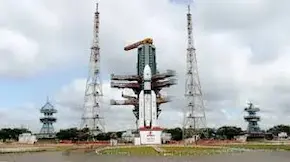
Why in News?
The Indian Space Research Organisation (ISRO) is set to launch the CMS-03 satellite — also referred to as GSAT-7R — from the Satish Dhawan Space Centre, Sriharikota. This satellite will significantly enhance India’s military communication infrastructure.
Key Takeaways
| Feature | Details |
|---|---|
| Satellite Name | CMS-03 (GSAT-7R) |
| Type | Military communication satellite |
| Weight | ~4400 kg (ISRO’s heaviest communication satellite to date) |
| Launch Vehicle | LVM3 (Launch Vehicle Mark-3, ISRO’s heaviest lift rocket) |
| Orbit Type | Geosynchronous Transfer Orbit (GTO) |
| Purpose | To boost military communications across land, air, and maritime domains |
Strategic Significance
Military Use: Designed specifically for armed forces, enabling secure, high-bandwidth communication.
Maritime Domain Awareness: Will support the Indian Navy, covering a large oceanic region and Indian landmass.
Indigenization: Boosts India’s capacity to develop and operate indigenous communication systems with strategic autonomy.
Geosynchronous Orbit – Explained
| Parameter | Description |
|---|---|
| Altitude | ~35,786 km above Earth’s equator |
| Orbit Period | Matches Earth’s rotation – satellite appears stationary from the ground |
| Use | Ideal for communication satellites due to consistent ground coverage |
| Also Called | Clarke Orbit (named after Arthur C. Clarke, who proposed the concept in 1945) |
Additional Context: Satellite Naming and Usage
| Satellite Series | Key Use |
|---|---|
| GSAT-7A | Indian Air Force communications |
| GSAT-7B | Indian Army support (upcoming) |
| GSAT-7R / CMS-03 | Naval communications & maritime support |
| CMS-01 / CMS-02 | Civil communication satellites launched in 2020–2021 |
Why This Matters
Enhances India’s secure communication network in the strategic Indo-Pacific region.
Supports real-time communication for missile systems, UAVs, warships, and fighter jets.
Reflects ISRO’s growing collaboration with India’s defence establishment (DRDO, Armed Forces).
Demonstrates ISRO’s heavy satellite launch capabilities using LVM3, the same rocket used in the Chandrayaan-3 mission.
Exam Connect – Possible Questions
Prelims
1. The CMS-03 satellite, recently launched by ISRO, is primarily intended for:
A. Weather forecasting
B. Navigation services
C. Military communication
D. Civilian broadcasting
Answer: C. Military communication
2. Which of the following orbits is commonly used for communication satellites and is also known as the Clarke Orbit?
A. Polar Sun-Synchronous Orbit
B. Geostationary Orbit
C. Low Earth Orbit
D. Molniya Orbit
Answer: B. Geostationary Orbit
Mains
1. Discuss the strategic significance of India’s military communication satellites like CMS-03 in the context of national security and maritime domain awareness.
2. How do geostationary satellites differ from polar and sun-synchronous satellites in terms of functionality and applications? Illustrate with examples from India’s space program.
5. 150 Years of ‘Vande Mataram’ – History and Culture
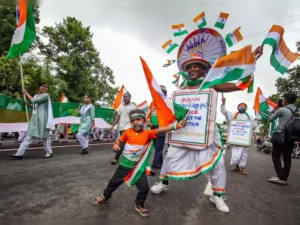
Why in News?
During the Mann Ki Baat broadcast, Prime Minister Narendra Modi called on citizens to commemorate 150 years of India’s National Song, Vande Mataram, written in 1875 by Bankim Chandra Chattopadhyay.
Key Takeaways
| Aspect | Detail |
|---|---|
| Author | Bankim Chandra Chattopadhyay |
| Year Written | 1875 |
| Language | Sanskrit (in Bengali script) |
| First Published In | Anandamath (1882 novel) |
| First Public Performance | By Rabindranath Tagore in 1896 at the INC Session |
| National Song Status | Officially adopted in 1937; equal status with Jana Gana Mana on Jan 24, 1950 |
Historical and Cultural Significance
Role in the Freedom Struggle:
Became the rallying cry of the Swadeshi Movement (1905–11), especially during the Partition of Bengal.
Frequently sung at protests, nationalist meetings, and by revolutionaries.
Symbolized unity, resistance, and devotion to Bharat Mata (Mother India).
Structure:
Composed of 6 stanzas—a fusion of high Sanskrit vocabulary and Bengali metre.
Describes India as the Divine Mother, rich in resources, strength, and cultural beauty.
Global Recognition:
Translated into English by Sri Aurobindo in 1909.
Set to music by Vishnu Digambar Paluskar and later popularized by Ravi Shankar.
Legal & Institutional Context:
In 1950, Dr. Rajendra Prasad declared that the first two stanzas would be the official National Song.
Played instrumentally at the end of Parliamentary sessions, symbolizing solemn closure.
Broader Themes:
Embodiment of Swadeshi ideals: economic self-reliance, boycott of British goods.
Part of the cultural nationalism that laid the foundation for political mobilization.
Evoked pan-Indian identity, transcending caste, religion, and region.
Exam Connect – Possible Questions
Prelims
1. Who wrote the national song Vande Mataram and in which novel was it first published?
A. Rabindranath Tagore, Gitanjali
B. Bankim Chandra Chattopadhyay, Anandamath
C. Subramania Bharati, India’s Freedom
D. Sri Aurobindo, The Life Divine
Answer: B. Bankim Chandra Chattopadhyay, Anandamath
2. In which year were the first two stanzas of Vande Mataram officially adopted as the National Song of India?
A. 1905
B. 1937
C. 1947
D. 1950
Answer: B. 1937
Mains
1. Discuss the role of cultural symbols like “Vande Mataram” in shaping India’s nationalist movement. How did such symbols influence collective national identity?
2. Analyze the historical context and significance of the Swadeshi Movement with special reference to the use of “Vande Mataram” as a political and cultural tool.
6. The Contours of Constitutional Morality – Polity
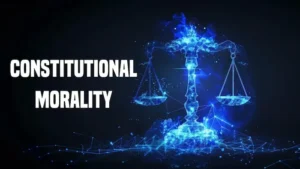
Why in News?
The debate over the relationship between law and morality has resurfaced in India, particularly in light of recent judicial pronouncements and societal developments. This reflects the tension between constitutional obligations and ethical values, as India grapples with evolving interpretations of rights, duties, and democratic governance.
Key Takeaways
| Concept | Explanation |
|---|---|
| Law vs Morality | A philosophical debate: Law is enforceable by the state; Morality is shaped by societal norms and conscience. |
| Constitutional Morality | The adherence to the core values of the Constitution (e.g., justice, liberty, equality, fraternity) by all institutions of governance. |
| Judicial Usage | Courts have increasingly invoked constitutional morality to decide contentious issues like LGBTQ+ rights, privacy, and personal liberty. |
| Evolution in India | Reflects a growing emphasis on substantive justice, rather than strict proceduralism. |
What is Constitutional Morality?
“Constitutional morality is not a natural sentiment. It has to be cultivated.” – Dr. B.R. Ambedkar
Definition:
Constitutional morality means following the values enshrined in the Constitution, even if it goes against majority public opinion, political convenience, or personal moral beliefs.
Key Components:
Respect for constitutional supremacy
Adherence to rule of law
Protection of individual rights
Tolerance for plurality
Checks on power through institutions
Judicial Recognition
| Case | Contribution |
|---|---|
| Navtej Singh Johar (2018) | Decriminalized homosexuality; held that constitutional morality trumps social morality. |
| Sabarimala Case (2018) | Used constitutional morality to strike down entry restrictions for women. |
| Justice K.S. Puttaswamy (2017) | Upheld right to privacy; recognized dignity and autonomy as part of constitutional morality. |
| Lt. Governor of Delhi v. Union of India (2018) | Emphasized constitutional morality in federal functioning. |
Constitutional Morality vs Social/Popular Morality
| Aspect | Constitutional Morality | Social Morality |
|---|---|---|
| Basis | Constitution and legal philosophy | Cultural, religious, and societal norms |
| Focus | Rights, dignity, justice | Traditions, customs, popular opinion |
| Enforcement | Interpreted and enforced by judiciary | Enforced by society, often informally |
| Risk | May face resistance or backlash | May perpetuate injustice or discrimination |
Relevance in Governance
Ensures that public officials act within constitutional limits.
Prevents majoritarianism and protects minority rights.
Encourages transformative constitutionalism—using the Constitution to bring about social change.
Criticisms
Critics argue that judicial overuse of the term can lead to subjective decisions.
There is concern about judicial activism when courts use morality over explicit constitutional text.
Exam Connect – Possible Questions
Prelims
1. Which of the following best describes the concept of “constitutional morality”?
A. Strict adherence to the popular will of the majority
B. Promoting religious values through legislation
C. Upholding the values enshrined in the Constitution such as liberty and equality
D. Following traditional customs and practices in governance
Answer: C. Upholding the values enshrined in the Constitution such as liberty and equality
Mains
1. What is constitutional morality? How has the Supreme Court of India applied this doctrine to expand the scope of fundamental rights? Illustrate with recent case law. (150 words)

